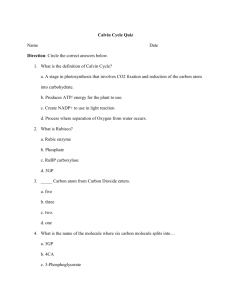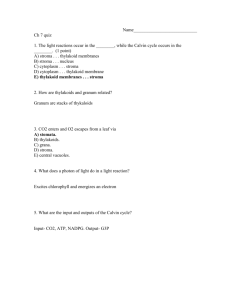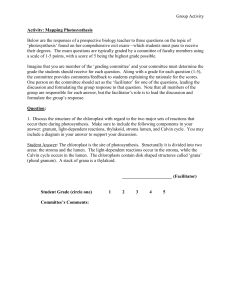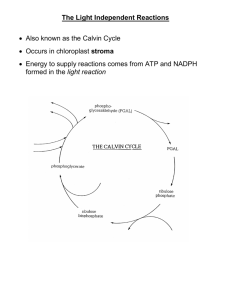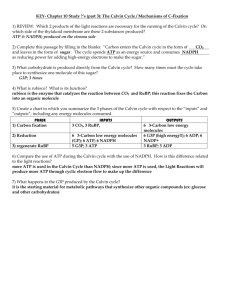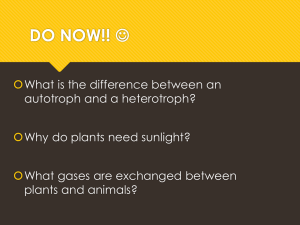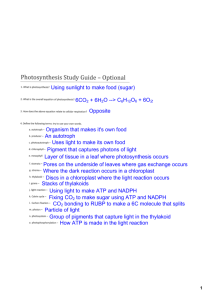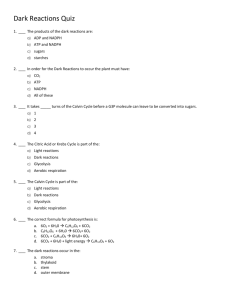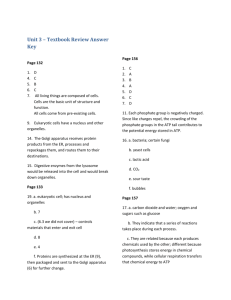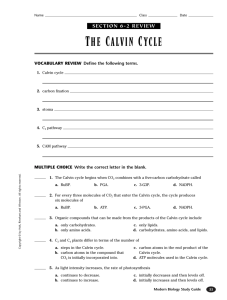Light-independent 11-17
advertisement
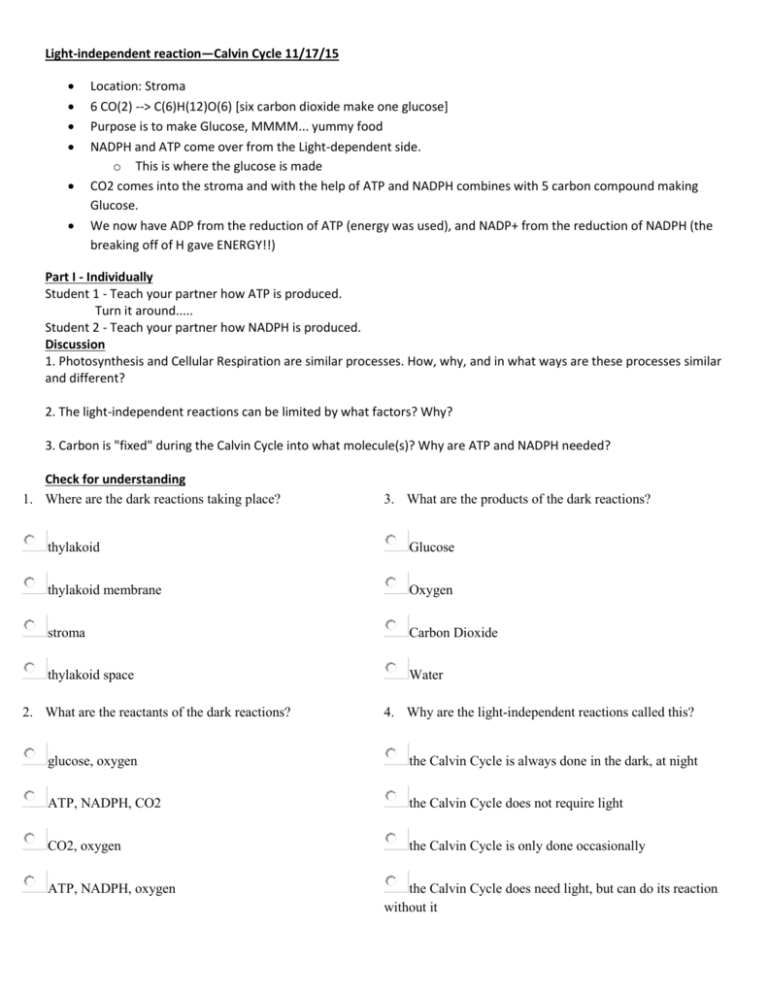
Light-independent reaction—Calvin Cycle 11/17/15 Location: Stroma 6 CO(2) --> C(6)H(12)O(6) [six carbon dioxide make one glucose] Purpose is to make Glucose, MMMM... yummy food NADPH and ATP come over from the Light-dependent side. o This is where the glucose is made CO2 comes into the stroma and with the help of ATP and NADPH combines with 5 carbon compound making Glucose. We now have ADP from the reduction of ATP (energy was used), and NADP+ from the reduction of NADPH (the breaking off of H gave ENERGY!!) Part I - Individually Student 1 - Teach your partner how ATP is produced. Turn it around..... Student 2 - Teach your partner how NADPH is produced. Discussion 1. Photosynthesis and Cellular Respiration are similar processes. How, why, and in what ways are these processes similar and different? 2. The light-independent reactions can be limited by what factors? Why? 3. Carbon is "fixed" during the Calvin Cycle into what molecule(s)? Why are ATP and NADPH needed? Check for understanding 1. Where are the dark reactions taking place? 3. What are the products of the dark reactions? thylakoid Glucose thylakoid membrane Oxygen stroma Carbon Dioxide thylakoid space Water 2. What are the reactants of the dark reactions? 4. Why are the light-independent reactions called this? glucose, oxygen the Calvin Cycle is always done in the dark, at night ATP, NADPH, CO2 the Calvin Cycle does not require light CO2, oxygen the Calvin Cycle is only done occasionally ATP, NADPH, oxygen the Calvin Cycle does need light, but can do its reaction without it
